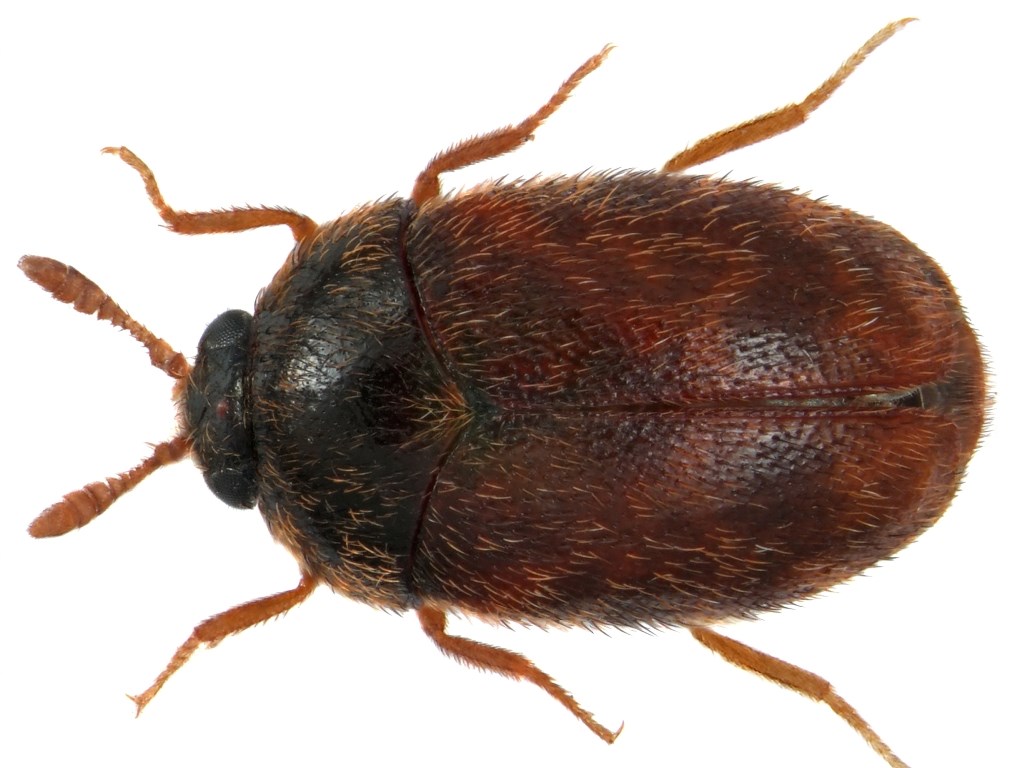Khapra beetle
(Trogoderma granarium)

Biology:
The Khapra beetle belongs to the same family (fam. Dermestidae, dermestid beetles) as the larder beetle and the carpet beetle. It has an oval body and is up to 3 mm long, with the males being slightly smaller than the females. The beetles are dark brown with fine hairs and have yellow-brown and red-brown transverse bands, which have all merged together, on their wing covers. The typically hairy larvae are yellow-brown and grow up to 5 mm long. At the rear end of the larvae, you can find dart-shaped hairs between the normal hairs. The creatures are extremely thermophilic but can pass into a rest state (diapause) and can therefore survive in unfavourable conditions for long periods of time, e.g. when there is a lack of food or in low temperatures. The beetles themselves do not feed; the larvae, on the other hand, have a very broad diet and live off all types of plant-based or animal-based products.
Damage:
The beetle, which originates from India, has now been introduced to lots of different countries and is one of the most dangerous quarantine pests. The larvae damage stored goods when they feed. The creatures' broad diet includes grains, grain products, malt, peanuts, legumes, expellers, fish meal and also packaging material.
The distinctively dart-shaped hairs of the larvae can also trigger allergies, as with the varied carpet beetle, etc.
